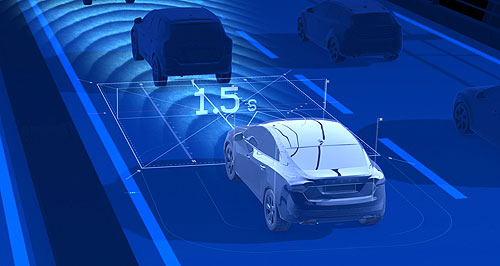News - General News - TechnologyTechnology group backs pay-for-kays road chargesKays for pay: ITS Australia says registration fees and the fuel excise should be replaced by a system that chargers the user depending on where they travel and how far. ITS Australia pushes road use charges as fairer revenue earner20 Aug 2014 By IAN PORTER A PEAK body advocating the use of intelligent road systems has joined a chorus of people and organisations pushing to have road users pay for where, and how far, they drive. ITS Australia argues that the technology now available should be used to replace registration fees and fuel excise, with road users instead being charged according to the distance driven and the locations used. The association’s chief executive, Susan Harris, has backed calls by the Productivity Commission, the Australian Competition and Consumer Commission (ACCC) and major motoring clubs around the country to replace the current indirect system of charging for road use. “Traditional approaches of registration fees and fuel excise have worked to a point, but we now have the technology to support a fairer, more sophisticated approach that will deliver community safety and efficiency benefits,” she said. These technologies include systems fitted to freeways and other major roads and also on-board technology that can communicate with other vehicles and the roadside infrastructure. They are grouped under the banner of intelligent transport systems (ITS). The roadside technology includes ramp metering and ramp signals on tollway entries, variable speed signs and traffic light co-ordination. “Intelligent transport systems can also increase the productivity of roads. Existing roads in Australia now carry more traffic than ever with the aid of electronic traffic management systems,” Ms Harris said. The call from ITS Australia has added to the mounting pressure from many organisations to replace what they see as an unfair funding system with one that charges according to how often you use the roads and which roads you use. Already this year the Productivity Commission has recommended that state and federal governments run pilot studies to investigate how vehicle telematics can be used to introduce a direct road charging system. Earlier this month, ACCC chairman Rod Sims told a conference that the prices now paid by motorists and transport companies – mainly registration fees and fuel excise – did not reflect the economic cost of using the roads. He also pointed out that governments could use a telematics system to charge a congestion fee as well as distance fees. The statements by the PC and the ACCC back up the policy position of the major motoring clubs such as the Royal Automobile Club of Victoria (RACV) and the National Roads and Motorists Association (NRMA), which have called for road pricing reform for some time. “We have a dysfunctional tax system, with motoring taxes,” RACV general manager of public policy, and ITS Australia chairman, Brian Negus said. “There is absolutely no link between what people are charged through the various fixed and variable taxes with what they actually do, nor where they do it,” said Mr Negus. “That lack of a direct link is the second point and the third point is there is no guaranteed funding arrangement. “The revenue from the various charges go into consolidated revenue at the federal level and into various pots at the state level.” The clubs argue that the funds raised by the various indirect motoring charges far exceed the amount spent on roads and that motorists are subsidising other government services such as health and social services. “We are not debating that they are not needed, but they should be funded through the general taxation grab rather than from motoring taxes,” Mr Negus said. The general aim is to charge drivers for the distance they travel on the roads and to also charge more for driving in city centres and other congested areas. “This is a dysfunctional system and not fit for purpose for what the governments want to achieve,” Mr Negus said. Direct road charging using satellite tracking of vehicles would be the best way to achieve complete coverage of road use, but a system of direct road charging could be introduced using other systems, VicRoads director of operations Dean Zabrieszach said. “It all depends on how you set it all up,” he told GoAuto. “If you do a road pricing thing based on how many kilometres people travel, do you need sensors? Could you just go on their odometers? Do you need a satellite tracking system via a chip in their car?“There are a number of different ways it could be done.” Some states in the US are transitioning to new ways of taxing road use without using global positioning satellite technology, Mr Negus said. “In the US there has been a transition in several states, where they give motorists options. “They can continue with the gasoline tax, or they can opt for a system which gets rid of that and charges them on a per mile basis, based on where they drive. “That allows them to see what they have been paying over the last several years and here’s the new system, so they can suck it and see.” Mr Negus said that a sophisticated road charging system could easily incorporate a congestion charge, so that drivers entering the city centre were charged more. This would help to ease congestion and help lift patronage on public transport, which also improves road use efficiency, he said.  Read more5th of May 2014  Technology promises transport upheavalSmart roads, autonomous cars, tech-savvy passengers will change personal mobility5th of May 2014  Intelligent transport under threat in the USLife-saving intelligent transport technology fights for spectrum with WiFi |
Click to shareGeneral News articlesResearch General News Motor industry news |
















Facebook Twitter Instagram